Metroid: Samus Returns Is the Remake Metroid II Deserves
8 out of 10.
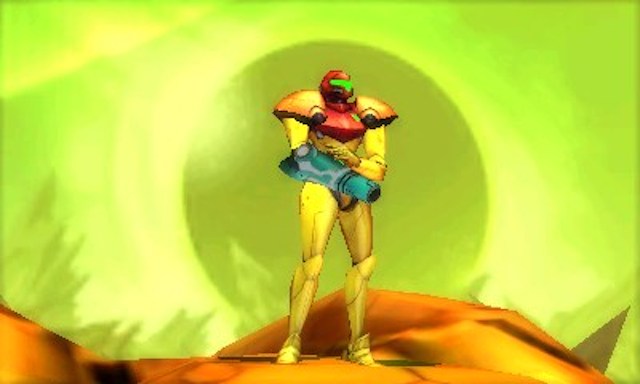

The original Game Boy title Metroid II: Return of Samus was a bit of an oddball for the Metroid series—at least until Federation Force came along, but I digress—with its largely linear gameplay and cramped environments, compared to the series’ knack for sprawling exploration. While it occupied an important point in the in-game storyline, directly leading into the series-defining Super Metroid, and made some iconic additions to the franchise, like the Spider Ball and Samus’ epic Varia Suit shoulder pads, it hasn’t gotten a lot of love in the years since its release.
The first Metroid, originally launched on the NES, already got the remake treatment in Metroid: Zero Mission, and Super Metroid holds up well enough not to need it, but Metroid II had been mostly left in the dust. Metroid: Samus Returns is about to change all of that. The 3DS remake is a complete reimagining of the game that makes revisiting this important piece of Metroid history a lot more fun than the Game Boy original. In terms of graphics and gameplay, it’s such a massive overhaul that there’s little point even comparing to the original, though some of the remake’s minor flaws do stem from its source material.
While the plot is the same, the whole thing has brand new 3D graphics and environments (though it’s played in 2D), new abilities to acquire, new boss battle mechanics, and extremely satisfying new combat mechanics. It’s basically a whole new game, and it’s one well worth playing for both fans of the original and those who missed it.

For the latter group, the game takes place post-Metroid, as Samus travels to the Metroid home world of SR388 to eradicate the energy-sucking space jellyfish entirely, in order to protect the universe from them. There, she travels ever deeper into the planet’s tunnel system, hunting a specified number of Metroids to extinction, encountering their advanced stages of growth (the incresingly lizard-like Alpha, Gamma, Zeta, and Omega Metroids) until eventually facing down the last one: the Queen Metroid.
On top of the other changes, Samus Returns also reimagines those Metroid encounters into a series of increasingly satisfying boss battles, as well as adding some additional exploration to that linear progression, resulting in what feels like a perfect hybrid of Super Metroid and Metroid II. If that alone doesn’t get you excited enough to play it, here are a few of the game’s especially high points:
Combat controls.
As a big fan of the Metroid Prime series, I was surprised by how much a side-scrolling Metroid game made me feel like I was Samus—maybe more than the first-person versions—all due to Samus Returns‘ excellent combat controls. Samus can run, jump, crouch and fire like you’d normally expect, but holding down the L button puts her into a precision aiming mode that uses the 3DS circle pad to fire in a full 360-degree range, anywhere on the screen.
There was a moment, shortly after picking up the Ice Beam, when I had to freeze an enemy in a precise spot to make use of the new upgrade. I likely would have missed it just after jumping up to the platform I was aiming for, and had to wait for it to come around again, if I had to aim without the new system. But toggling on the aiming mode, flicking the circle pad to the right spot, and firing felt so intuitive that I pulled it off without a second thought, and its instant responsiveness makes for plenty of similar moments.
Then, there’s the excellent melee counter mechanic, which allows Samus to parry incoming foes and take them out with a well-placed shot.
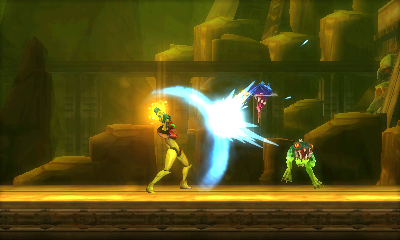
There are even smaller details, like your firing rate increasing pretty much as quickly as you can jab the button, which makes for some situations where extra effort on trigger speed yields better results. The animation of all of this, by the way, looks awesome, and it all combines together to make you feel every bit as powerful and skilled as you’d want from a bounty hunter with a robotic suit.
Boss battles.
This is a game full of boss battles by its very nature, starting you off with the task of eradicating somewhere in the neighborhood of 30 Metroids. As you’d expect, the smaller ones introduce you to the mechanics involved before throwing their own variations into the mix.
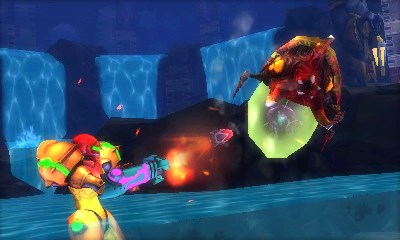
Then, the bigger ones add more of their own twists and attack patterns, slowly building your skill in wiping them out.
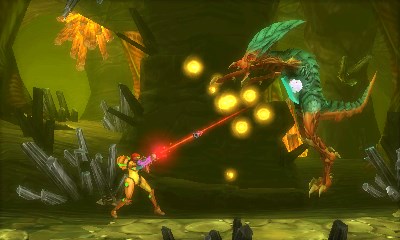
There are also some great, interactive-cinematic moments thrown in on the later ones if you can manage to catch them with your melee counter. Once you get your tactics down, even the later bosses aren’t overly difficult, but they can still surprise you with some heavy damage if you get cocky and let your guard down. There are also plenty of moments where you’ll feel clever for figuring out how to use your different abilities to most effectively combat a specific boss, which is a necessity in a series focused around building up an arsenal over the course of a game.
In addition to the Metroids, Arachnus also makes a return as a boss from the Game Boy original, as well as a brand new, robotic boss that perfectly breaks up the repeated Metroid encounters. That boss in particular does some really clever things with calling back to elements that you’ve dealt with out in the overworld to inform your strategy in bringing it down. The more familiar, jellyfish-esque Metroid form also gets a proper and tense introduction when you finally need to face some of them, making them feel oddly threatening compared to their giant, overgrown boss forms.
New abilities.
Samus Returns adds several brand new abilities, which is important to keep things fresh in a series that focuses on tracking down and collecting powerups. In addition to the beams, bombs, missiles, and jumping abilities that you’d expect, Samus has new Aeion powers that use their own energy gauge for fuel. There’s a scanning ability that helps reveal the map and destructible blocks for exploration, an armor ability for defense, a rapid-fire beam weapon that’s necessary to take out certain enemies, and a time-slowing ability necessary for exploring some areas.
—
It’s not a perfect game, so here are some of the (mostly minor) trouble spots in my experience.
It’s still a bit linear.
Make no mistake, this version of the game features way more Metroid-like exploration than its predecessor, but much of it is for ancillary, optional upgrades like extra missile capacity or health. Early on in the game, these feel more necessary and compelling to find, and I personally get a lot of enjoyment out of purposefully avoiding a game’s main quest in favor of poking around to see what I can find elsewhere, no matter how mundane. But approaching the end of the game, you’ll likely find yourself bypassing the mini-puzzles that hide some of these bonuses and going straight for the big upgrades and bosses instead.
This linear nature also makes some hidden areas involving the later upgrades seem a bit pointless. After all, if you need, say, the power bomb to access an entire map area in the first place, requiring power bombs rather than normal bombs for passages within that area seems a bit like overkill. I was also a little bummed by how quickly the Space Jump supersedes the Grapple Beam’s usefulness for movement, even if it retains some puzzle-solving utility.
You’re still collecting mostly the same old upgrades.
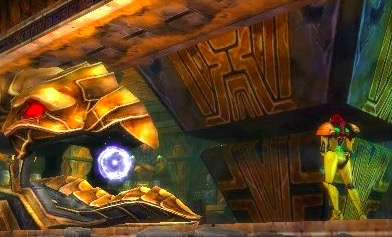
Every new Metroid game has to find an excuse for Samus running around collecting the same old upgrades. Things got especially, famously ridiculous in Other M, with Samus needing permission to use her suit’s functions. It’s a little more excusable here, in what is a remake of only the second game in the series, but it’s still very deja vu-inducing. The addition of brand new powerups helps, but taking even more liberties there, rather than collecting mostly familiar upgrades, would’ve been greatly appreciated.
Lopsided difficulty.
As much as I love the melee-counter ability, standard enemy encounters still get a bit repetitive. While there are enemies that shake up the formula and mitigate this problem, a lot of regular enemy encounters follow a pattern of waiting for their attack, countering, and firing a kill shot. I don’t want every enemy encounter in the game to be a protracted battle, because it would interfere too much with the exploration, but some slight variations in attack patterns would have gone along way.
Most enemies only have one, melee-counterable attack that they initiate immediately upon noticing Samus. One enemy almost pulls off a change, with a later variation firing an acid projectile as well as its standard attack, but it (at least seems to) still always do this in a pattern of projectile first, then parry-able attack, and the projectile can be dispersed by … hitting it with a melee attack, making the response to it effectively the same.
On top of this, it’s very easy—too easy—to recover health and ammo outside of boss encounters just by killing low-level enemy creatures, making the replenishment stations for both of those feel useless and lowering the stakes significantly. The only place you’re ever likely to actually lose is in a boss battle. I can’t speak for hard mode, which I haven’t gotten the chance to play yet, but only normal is unlocked from the start, which seems like a mistake when seasoned Metroid players are a likely target audience for the game—players who will already get enough of a feeling of retread without having to play a second time for added difficulty.
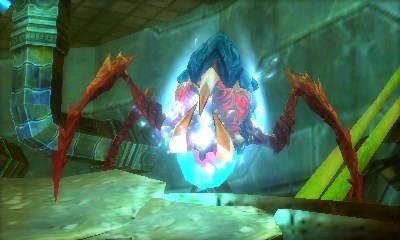
A few more minor things.
The Scan Pulse ability’s pinging sound for identifying hidden blocks is way too much louder than the rest of the game’s audio. I know that sounds petty, but it sticks out like a sore thumb above the game’s generally subdued audio. The ability already feels a bit like cheating, and the blocks flash on the screen, so the overly distracting audio cue is a bit of an odd choice.
There are also some strange control choices, like the scan ability’s “tap to initiate, tap to cancel” button scheme, which seems to serve no purpose other than allowing players to cancel accidental activation, since it eats up some of your Aeion gauge. When still getting used to the game, I set this ability off by accident more than once, but a better way to stop that from happening would be to simply make players hold down the button for the ability’s entire warmup. There’d be no doing that accidentally at all.
The wall jump and Space Jump abilities also behave a little strangely when Samus jumps in place vs. a spinning, directional jump. Once you realize this, it’s easily mitigated, but it would’ve been better for that not to be necessary at all.
Another incredibly minor thing that I personally would have liked is if aiming for a kill shot after a melee parry required actually pressing the aim button rather than happening automatically. The aiming system just felt so natural that I kept doing it instinctively, and that would’ve been a nice touch for immersion’s sake.
—
Overall, these criticisms are minor in the face of what is, generally, a very enjoyable game and absolutely the best way to experience the second installment of the Metroid series. The later part of the game, on the hunt for the final Metroid, is especially fun with all abilities at your disposal, and some interesting twists are thrown your way. At one point, I wound up in a pit with an enemy I needed an Aeion ability to dispatch, but I was out of fuel for it.
So, I tried to jump safely onto a platform where it couldn’t shoot me, but the platform turned out to be destructible by my jumps, which landed me right back in the pit. I couldn’t climb out with the Spider Ball, either, because I’d get hit again before I could get far enough. The solution was easy enough, but it was a tense moment to go through all my options while under attack.
Basically, when Metroid: Return of Samus is fun and works well, it’s great, and that’s most of the time while playing it. I highly recommend it to 3DS owners when it debuts this Friday, and I hope we get more 2D Metroid games like it in the future.
A review copy of Metroid: Samus Returns was provided for the purposes of this review.
(images: Nintendo)
Want more stories like this? Become a subscriber and support the site!
—The Mary Sue has a strict comment policy that forbids, but is not limited to, personal insults toward anyone, hate speech, and trolling.—
Have a tip we should know? [email protected]